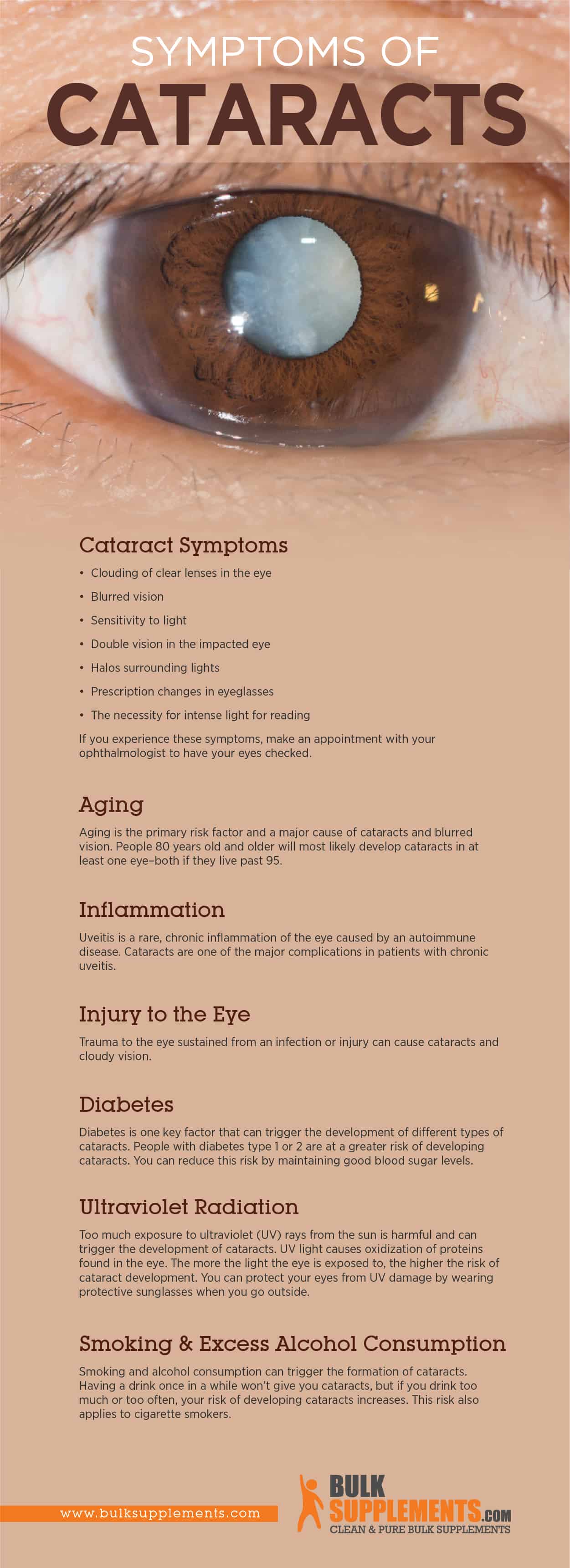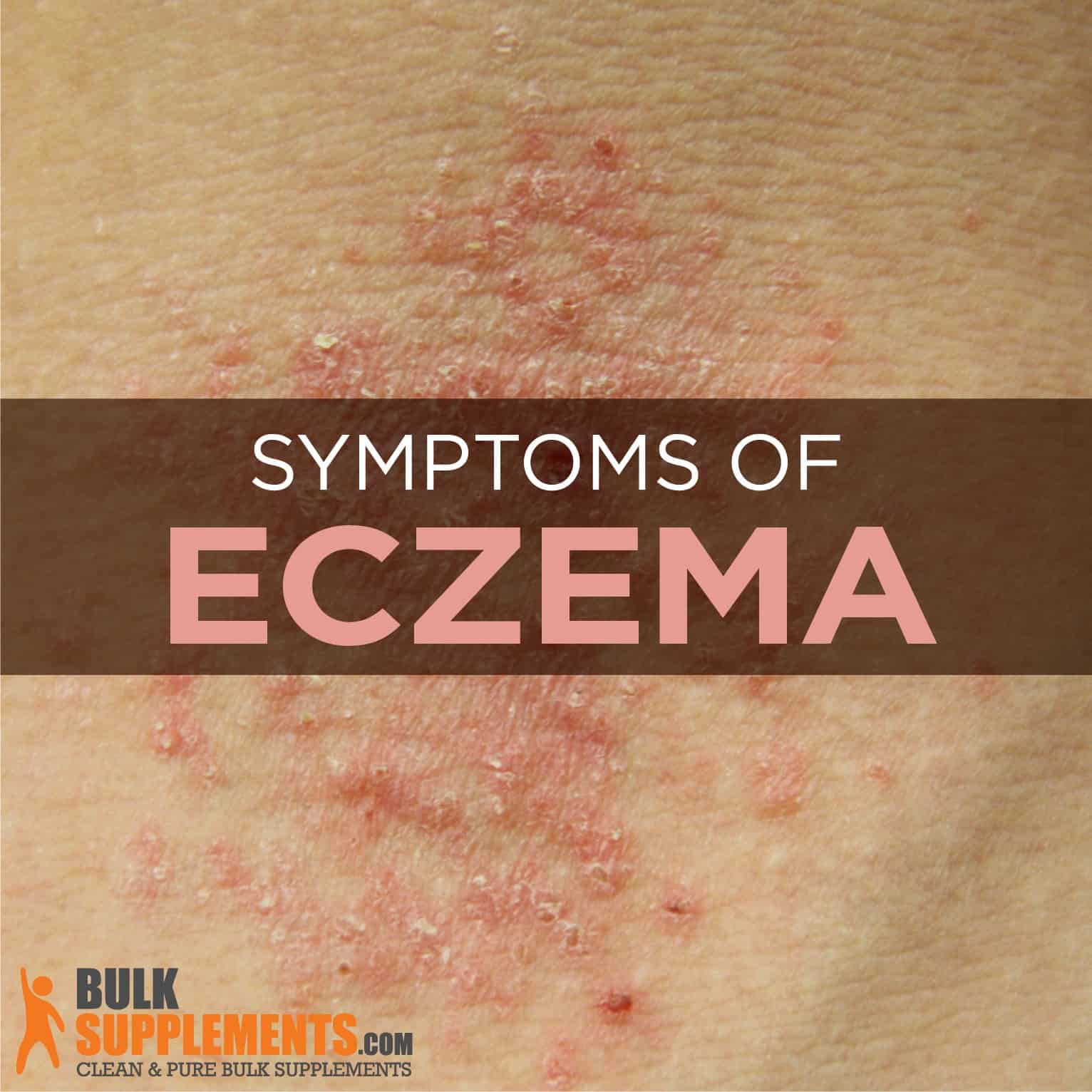Cataracts: Symptoms, Causes & Treatment

Cataracts
What Are Cataracts?
Your eyes and cameras are similar: they both have lenses. The lenses in your eyes focus the light rays coming through the pupil into the retina (the backside of the eye). Different components of the retina collect this light and send a message to your brain so you can see.
When this lens is clear, light can pass through it and reach the retina. But when the lens becomes opaque or clouded, light cannot pass through it, and vision becomes blurred. This is called a cataract.
Over time, cataracts can cause blindness. In fact, they’re the leading cause of blindness around the world.
Cataracts Symptoms
- Clouding of clear lenses in the eye
- Blurred vision
- Sensitivity to light
- Double vision in the impacted eye
- Halos surrounding lights
- Prescription changes in eyeglasses
- The necessity for intense light for reading
If you experience these symptoms, make an appointment with your ophthalmologist to have your eyes checked.
Types of Cataracts
Different types of cataracts include congenital cataracts, age-related cataracts, traumatic cataracts (the result of an injury to the eye) and secondary cataracts, which occur as a result of certain health conditions.
Nuclear sclerosis, the natural aging of the eye, is another condition that can cause clouded vision associated with cataracts. Inflammation, excessive drinking, and smoking can also cause cataracts.
Other types of cataracts include:
- Nuclear cataracts are responsible for double vision and multiple copies of an image. They occur in the middle of the eye.
- Cortical cataracts appear on the exterior edge of the lens, called the cortex. They appear as small streaks in the eye and cause glaring and poor night vision.
- Posterior subcapsular cataracts occur on the rear of the lens. Symptoms include glaring, halos around lights, and an impaired ability to read, even in bright light.
Causes of Cataracts
Aging
Aging is the primary risk factor and a major cause of cataracts and blurred vision. People 80 years old and older will most likely develop cataracts in at least one eye–both if they live past 95.
Inflammation
Uveitis is a rare, chronic inflammation of the eye caused by an autoimmune disease. Cataracts are one of the major complications in patients with chronic uveitis (x).
Injury to the Eye
Trauma to the eye sustained from an infection or injury can cause cataracts and cloudy vision.
Diabetes
Diabetes is one key factor that can trigger the development of different types of cataracts. People with diabetes type 1 or 2 are at a greater risk of developing cataracts. You can reduce this risk by maintaining good blood sugar levels.
Ultraviolet Radiation
Too much exposure to ultraviolet (UV) rays from the sun is harmful and can trigger the development of cataracts. UV light causes oxidization of proteins found in the eye. The more light the eye is exposed to, the higher the risk of cataract development. You can protect your eyes from UV damage by wearing protective sunglasses when you go outside.
Smoking and Excess Alcohol Consumption
Smoking and alcohol consumption can trigger the formation of cataracts. Having a drink once in a while won’t give you cataracts, but if you drink too much or too often, your risk of developing cataracts increases. This risk also applies to cigarette smokers.
Risk Factors of Cataracts
Other risk factors for cataracts include:
- Exposure to radiation from cancer treatments and X-rays
- High blood pressure
- Family history of cataracts
- Genetic conditions like Down syndrome and galactosemia
- Obesity
- Diabetes
- Gender; women are more prone to cataracts than men
Cataracts Diagnosis
Your ophthalmologist can diagnose cataracts by conducting an extensive eye examination which includes a variety of tests, including:
- Tonometry. This test is used to determine the intraocular pressure within the eye.
- Slit-lamp exam. This test is carried out using a special microscope that enables your doctor to evaluate different parts of the eye.
- Visual acuity test. This test involves the use of a chart with different-sized letters to measure the patient’s ability to see them at different distances.
- Dilated eye exam. In this test, doctors use drops to enlarge the pupils, which allows them to examine the retina and optic nerve.
Cataract Prevention
Doctors treat cataracts with surgery, but only when they have significantly worsened. The surgery involves removing the affected lens and replacing it with an artificial lens.
Other preventive measures include:
- Quitting smoking
- Regular eye check-ups
- Wearing UV protective sunglasses
- Maintaining a healthy body weight
- Consuming antioxidant-rich fruits and vegetables
- Watching out for diseases like diabetes

Supplements for Cataracts
Vitamin A
Studies suggest that vitamin A-rich foods can benefit vision, potentially reducing the risk of cataracts or other degenerative eye conditions.
Vitamin-A deficiency can lead to corneal dryness, which can cause clouding of the front of the eye, loss of vision, and corneal ulcers. It can also lead to damage of the retina, which may result in blindness.
Foods rich in vitamin A include sweet potatoes, leafy greens, and carrots. You can also take 50 mg of vitamin A palmitate powder once daily (roughly equivalent to 150 percent of the FDA-recommended daily value). For best results, use a milligram scale for accurate measurement.
Vitamin C
Vitamin C is a strong antioxidant that can protect the eye by fighting damaging free radicals. By doing so, it minimizes the risk of cortical and nuclear cataracts. In fact, continuous consumption of vitamin C for a period of up to 10 years can slow the advancement of nuclear cataracts.
SEE ALSO

Eczema: Characteristics, Causes & Treatment
Broccoli, citrus fruits, tomatoes, peppers, and tropical fruits are good sources of vitamin C. You can also take ascorbic acid (vitamin C) powder.
Vitamin E
Vitamin E-rich foods are essential in preventing the formation of cataracts. Some sources of vitamin E include spinach, sweet potato, almonds, and wheat germ. Vitamin E supplements can also slow the progression of cataracts.
If you plan to take vitamin E supplements, take one vitamin E softgel per day with a meal, or as instructed by your physician.
Zinc
When it comes to fighting cataracts, zinc acts as a “helper molecule.” It plays an essential role in transporting vitamin A from the liver to the retina. From there, vitamin A produces melanin, which acts as a protective pigment. Zinc deficiency may result in poor night vision and cloudy vision.
Yogurt, beef, kefir, and pumpkin seeds are some zinc-dense foods. If you plan to take dietary zinc supplements, follow the recommended dosage on the labels or take as instructed by your physician.
Omega-3s
Eating cold-water fish rich in omega-3 fatty acids can help slow down cataract progression by producing more tears to keep your eyes hydrated. Lack of tears results in dryness, discomfort, and cloudy vision. Foods like salmon and chia seeds are some of the foods rich in omega-3 fatty acids.
Lutein and Zeaxanthin
Lutein and zeaxanthin are important carotenoids that could help fight cataracts. These carotenoids help filter high-energy, blue wavelengths of light, which aid in the protection and maintenance of healthy eye cells.
You can find lutein and zeaxanthin in foods like kale, broccoli, corn, spinach, and turnip greens. You can also take supplements like zeaxanthin powder and lutein powder.
The Bottom Line
While you can’t always avoid cataracts, you can stay on the safe side by taking care of your vision. Avoid excess alcohol consumption and smoking, and eat a balanced diet rich in whole grains, fruits, vegetables, and healthy fats. You can also take supplements to keep your eyes healthy.
If you have cataracts, talk to your ophthalmologist to determine the best course of treatment.



